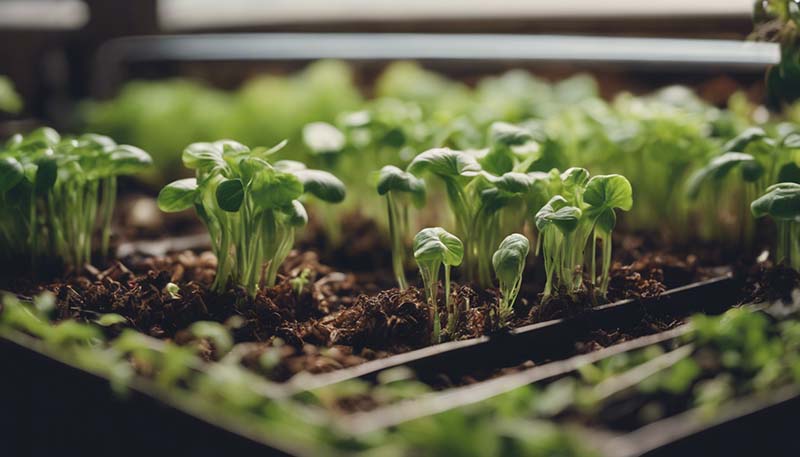Indoor Gardening: The Benefits of Vermiculture
Vermicomposting, or vermiculture, is the process of using worms to create nutrient-rich compost for indoor gardening. This sustainable and eco-friendly practice offers several benefits to both the environment and the gardener. In this article, we'll explore the advantages of incorporating vermiculture into your indoor gardening routine.
The Benefits of Vermiculture in Indoor Gardening
1. High-Quality Compost
Worms are natural recyclers, converting organic waste into nutrient-rich compost that is perfect for indoor plants. This compost is often referred to as "black gold" due to its dark color and high nutrient content.
2. Space Efficiency
Indoor gardening spaces can be limited, but vermiculture systems like worm bins and worm towers can be compact and easily placed on countertops or shelves.
Advertisement
3. Improved Soil Structure
The compost produced by vermiculture enhances the soil's structure, allowing for better water retention and aeration, which is crucial for healthy root development in indoor plants.
4. Suppression of Plant Diseases
Vermicompost has been shown to suppress various plant diseases by promoting beneficial microorganisms that protect plants from harmful pathogens.
5. Reduction in Waste
By using vermiculture, you can recycle your kitchen scraps and other organic waste into valuable compost, thus reducing the amount of waste that ends up in landfills.
6. Cost-Effective
Setting up a vermiculture system is relatively inexpensive, and once established, it can save you money on buying commercial fertilizers and soil amendments.
7. Environmentally Friendly
Vermicomposting is an environmentally responsible way to garden. It reduces waste, conserves water, and promotes biodiversity by supporting beneficial soil organisms.
8. Educational and Therapeutic
Caring for worms and observing the composting process can be educational for children and therapeutic for adults, fostering a deeper connection with nature.
9. Easy to Maintain
Once you understand the basics, vermiculture is a low-maintenance practice. Worms require minimal care, and the system is easy to manage indoors.
10. Year-Round Operation
Unlike outdoor composting, which can be affected by weather, a vermiculture system can operate all year round, providing a steady supply of compost for your indoor plants.

Getting Started with Vermiculture
To start your own vermiculture system, you'll need:
- A suitable container with ventilation.
- Red wiggler worms, which are the most commonly used for vermicomposting.
- Bedding material, such as shredded newspaper or coconut coir.
- A source of food, like vegetable scraps (avoiding citrus, onions, and spicy foods).
- A moisture source, such as a spray bottle with water.
Steps to Set Up a Vermiculture System
- Choose a location for your worm bin that is dark, cool, and away from direct sunlight.
- Prepare the bin by adding a layer of bedding material.
- Introduce the worms to the bin and cover them with more bedding.
- Add a layer of kitchen scraps, ensuring they are small and well-distributed.
- Moisten the bedding and food waste to maintain adequate moisture levels.
- Maintain the bin by regularly checking moisture levels and turning the compost to aerate it.
Conclusion
Incorporating vermiculture into your indoor gardening routine can significantly enhance the health and productivity of your plants. It's a sustainable practice that not only benefits your plants but also the environment. With minimal effort and investment, you can enjoy the many advantages of vermicomposting.
Comment